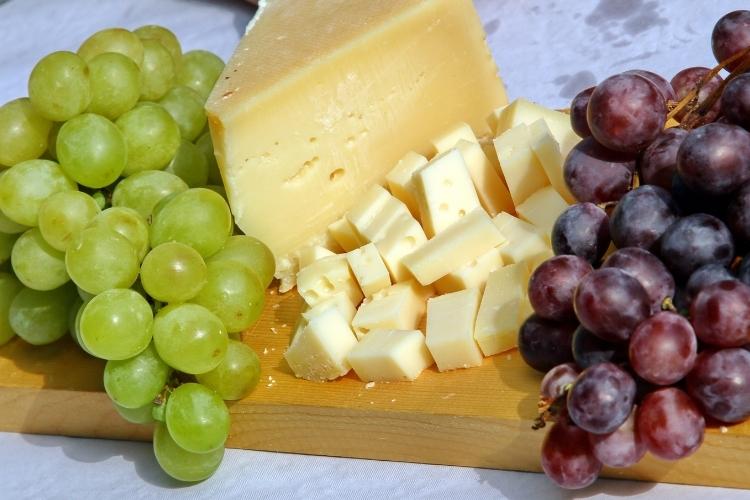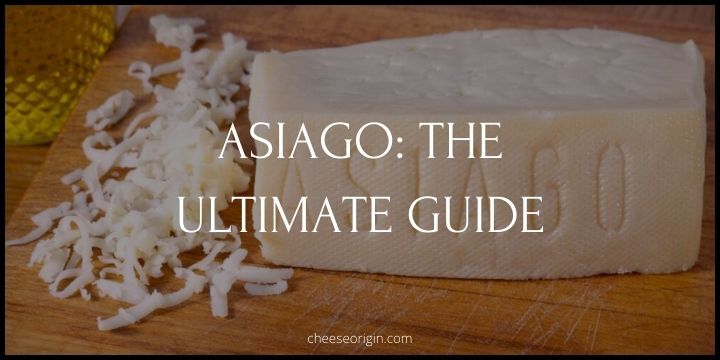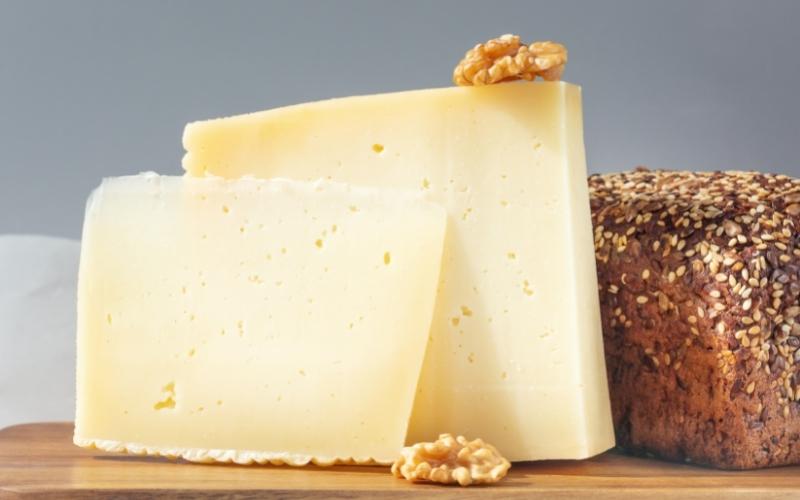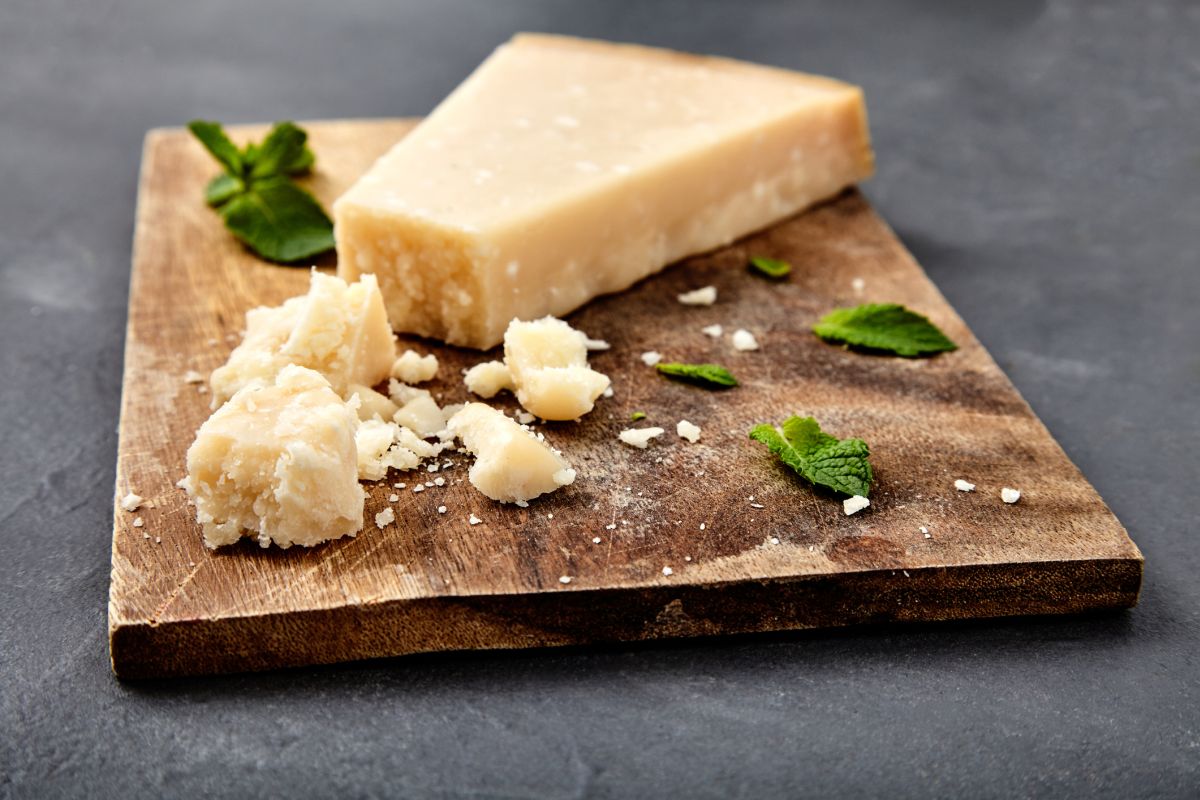Introduction

Asiago cheese and Parmesan cheese are both well-known Italian cheeses that have made their way into kitchens around the world. While they may look similar, these two cheeses have distinct flavors and characteristics that set them apart. In this article, we will explore the origins and production processes of Asiago and Parmesan cheese, delve into their flavor profiles, examine their nutritional values, and highlight their unique qualities. Whether you’re a cheese connoisseur or simply someone who enjoys a good cheese, this guide will help you understand the differences between Asiago and Parmesan cheese.
A Brief History Of Asiago And Parmesan Cheese
Asiago cheese and Parmesan cheese both have rich histories that date back centuries. Asiago cheese originated in the Asiago plateau in the Veneto region of Northern Italy. It has been produced since the 10th century and was traditionally made by farmhouses in the region. Parmesan cheese, on the other hand, has a longer history, dating back over 700 years. It originated in the Parma, Reggio Emilia, Modena, and Bologna regions of Italy. Parmesan cheese was originally made by monks in monasteries and eventually gained popularity among the noble families in Italy. Today, both cheeses continue to be produced using traditional methods and are enjoyed all over the world.
Asiago Cheese
Asiago cheese is a traditional Italian cheese that originated in the Asiago plateau of the Veneto region in Northern Italy. It has a rich, creamy texture and a distinct flavor profile. The production process involves using cow’s milk and traditional methods, including curdling, molding, and aging. There are different varieties of Asiago cheese, including Asiago d’Allevo, which is aged for at least nine months and has a more intense flavor, and Asiago Pressato, which is young and has a milder taste. Asiago cheese is versatile and can be used in a variety of dishes, from pasta to sandwiches, adding a delicious and savory touch.
Origin And Production Process Of Asiago Cheese

Asiago cheese originated in the Asiago plateau of the Veneto region in Northern Italy. It is produced using cow’s milk and traditional methods. The milk is curdled, molded, and then aged, resulting in a rich and creamy texture. The cheese is typically shaped in a cylindrical form. The aging process can vary, with Asiago d’Allevo aged for at least nine months, developing a more intense flavor. The traditional production methods, along with the unique climate and terroir of the region, contribute to the distinct and flavorful characteristics of Asiago cheese.
Different Varieties And Aging Of Asiago Cheese
Asiago cheese comes in different varieties, each with its own unique characteristics. The most common types are Asiago Fresco and Asiago d’Allevo. Asiago Fresco is a younger cheese, aged for about 20 to 40 days, and has a mild and creamy flavor. It is often used in sandwiches or melted in dishes. Asiago d’Allevo, on the other hand, is aged for at least nine months, resulting in a more intense flavor. This variety is crumbly and has hints of nuts and spices. It is perfect for grating over pasta, soups, and risottos. So whether you prefer a milder or stronger taste, Asiago cheese offers a range of options to suit your palate.
Parmesan Cheese
Parmesan cheese, also known as Parmigiano Reggiano, is a popular Italian cheese with a rich and robust flavor profile. It is produced using traditional methods in the Parma and Reggio Emilia regions of Italy. The production process involves using raw cow’s milk that is aged for at least 12 months, resulting in a hard and crumbly texture. Parmesan cheese has distinct fruity and savory notes, along with a pronounced umami flavor. Its earthy undertones make it a versatile ingredient that adds depth to a variety of dishes, including pastas, salads, and soups.
Origin And Production Process Of Parmesan Cheese

Parmesan cheese, also known as Parmigiano Reggiano, originates from the Parma and Reggio Emilia regions of Italy. The production process involves a careful and traditional method that has been used for centuries. Raw cow’s milk is heated and mixed with calf rennet to initiate the curdling process. The curd is then cut into small granules and cooked at a specific temperature. After cooking, the curd is shaped into large wheels and placed in brine to further enhance the flavor. The cheese is then left to age for a minimum of 12 months, during which it develops its distinct flavor and texture. This lengthy aging process gives Parmesan its rich, nutty, and slightly sweet taste, making it a prized cheese worldwide.
Types Of Parmesan Cheese And Aging Process
Parmesan cheese, or Parmigiano Reggiano, comes in different types based on its aging process. The most common types are Extra-Old or Stravecchio, which is aged for over 36 months and has a more intense and sharp flavor. Aged or Vecchio Parmesan is aged for 24-36 months and has a rich and nutty taste. Young or Stagionato Parmesan is aged for 12-18 months and has a milder flavor. The aging process of Parmesan cheese is crucial as it develops its distinct flavor, texture, and crumbly consistency. Each type offers a unique taste experience and can be enjoyed in various culinary preparations.
Flavor Profile
The flavor profile of Asiago cheese is characterized by a buttery creaminess with a hint of nuttiness. It has a mild flavor when it is fresh, but as it ages, the cheese develops a sharper taste. Asiago Stravecchio, in particular, has a more pronounced bitterness. On the other hand, Parmesan cheese is known for its sharpness and robust flavor. It has well-expressed fruity and savory notes, along with a distinct earthiness. Fully aged Parmigiano Reggiano also has traits of umami flavor. Both cheeses can be used to enhance the flavor of various dishes such as pasta, pizza, or salads.
Taste And Aroma Characteristics Of Asiago Cheese

Asiago cheese is known for its distinct taste and aroma characteristics. It has a buttery creaminess that is accompanied by a subtle nuttiness. When fresh, Asiago cheese has a mild flavor, but as it ages, it develops a sharper and more intense taste. The cheese also has a slight bitterness, particularly in the case of Asiago Stravecchio. In terms of aroma, Asiago cheese has a pleasant, slightly tangy smell that adds depth to its overall flavor profile. This unique combination of flavors and aromas makes Asiago cheese a delightful addition to various dishes.
Flavor Profile And Culinary Uses Of Parmesan Cheese
Parmesan cheese is renowned for its rich and robust flavor profile. It has a sharp and nutty taste with subtle fruity and savory undertones. The cheese also exhibits a distinct earthy aroma that enhances its overall flavor. Parmesan cheese is a versatile ingredient in cooking and pairs well with various dishes. It adds depth of flavor to pasta dishes, risottos, and soups. Grated Parmesan cheese is a popular topping for salads and pizzas, and it can also be enjoyed on its own as a flavorful cheese accompaniment. Its intense flavor makes it a cherished ingredient in Italian cuisine.
Nutritional Value
Parmesan cheese and Asiago cheese offer different nutritional benefits. Parmesan cheese is higher in protein, calcium, and phosphorus compared to Asiago cheese. It also contains less sodium and sugar per serving. On the other hand, Asiago cheese tends to have fewer calories, total fat, and saturated fat. When choosing between Parmesan and Asiago cheese, considering their nutritional values can help in making an informed decision. Both cheeses can be enjoyed in moderation as part of a balanced diet, providing essential nutrients and adding flavor to various dishes.
Nutritional Components And Benefits Of Asiago Cheese

Asiago cheese is a rich source of essential nutrients. It is packed with protein, calcium, and phosphorus, which are vital for the growth and maintenance of strong bones and muscles. Additionally, Asiago cheese contains vitamins A and B12, contributing to healthy vision and nerve function. The cheese also provides beneficial fats, including monounsaturated fats that support heart health. With its low lactose content, Asiago cheese is suitable for those with lactose intolerance. Incorporating Asiago cheese into one’s diet can contribute to a well-balanced and nutritious eating plan.
Comparison Of The Nutritional Content Of Parmesan Cheese
Parmesan cheese is a nutrient-dense option with several health benefits. It is rich in protein, calcium, and phosphorus, which are crucial for bone health and muscle function. Parmesan cheese also contains vitamins A and B12, promoting healthy vision and nerve function. Additionally, it provides essential minerals like zinc and magnesium. While Parmesan cheese is higher in calories and fat compared to Asiago, it is lower in sodium and sugar. This makes it a favorable choice for individuals looking to incorporate more nutrients into their diet while keeping a check on their sodium and sugar intake.
Conclusion
In conclusion, Asiago and Parmesan cheese are both delicious options in the world of Italian cheese. While Asiago cheese offers a buttery creaminess and nuttiness, Parmesan cheese boasts a sharpness and robustness. Both cheeses have distinct flavor profiles that can enhance a variety of dishes. When it comes to nutritional value, Parmesan cheese takes the lead with its higher protein, calcium, and phosphorus content. However, Asiago cheese is still a nutritious choice with its vitamins and minerals. Whether you choose Asiago or Parmesan, you can’t go wrong with either option when adding flavor and richness to your meals.
Key Differences Between Asiago And Parmesan Cheese

Asiago and Parmesan cheese may look similar, but they have some key differences. Asiago cheese is known for its buttery creaminess and subtle nuttiness, while Parmesan cheese offers a sharper and more robust flavor profile. Asiago cheese also tends to have a more pronounced bitterness, particularly in the aged Stravecchio variety. Parmesan cheese, on the other hand, showcases fruity and savory notes, along with a distinct earthiness. Additionally, Parmesan cheese tends to have a stronger umami flavor. These differences in flavor make each cheese unique and suitable for different culinary uses.
Suggestions For Pairings And Recipes With Asiago And Parmesan Cheese
When it comes to pairings and recipes, Asiago and Parmesan cheese can elevate your culinary creations to the next level. For Asiago cheese, it pairs wonderfully with cured meats like prosciutto or salami, as well as with fruits such as pears or apples. It also adds a delightful touch when sprinkled over salads or melted into creamy pasta sauces.
As for Parmesan cheese, it is a classic ingredient in Italian dishes like risotto, pasta carbonara, and Caesar salad dressing. It also brings out the flavors in roasted vegetables, soups, and grilled meats.
Here are a few recipe ideas to inspire your creativity:
- Asiago and Mushroom Bruschetta: Top toasted bread slices with sautéed mushrooms and grated Asiago cheese for an irresistible appetizer.
- Parmesan Crusted Chicken: Coat chicken breasts in a mixture of Parmesan cheese and breadcrumbs, then bake until golden and crispy.
- Asiago and Spinach Stuffed Chicken: Stuff chicken breasts with a mixture of cooked spinach, Asiago cheese, and breadcrumbs, then bake to perfection.
- Parmesan Roasted Vegetables: Toss a medley of your favorite vegetables with olive oil, garlic, and grated Parmesan cheese, then roast until caramelized and tender.
- Asiago and Pear Salad: Combine mixed greens, sliced pears, and toasted walnuts, then top with shaved Asiago cheese and a tangy vinaigrette.
With these suggestions, you can explore the versatility of Asiago and Parmesan cheese and bring a touch of Italian flair to your meals. Bon appétit!
FAQ About Asiago Cheese Vs Parmesan: Italian Cheese Duel
Q: What is the difference between Asiago cheese and Parmesan cheese?
A: Asiago cheese is a semi-cooked cow’s milk cheese from the Asiago plateau in the Veneto region of Italy, whereas Parmesan cheese, also known as Parmigiano-Reggiano, is a hard, granular cheese made from cow’s milk in the provinces of Parma, Reggio Emilia, Modena, and Bologna.
Q: How do the flavors of Asiago and Parmesan differ?
A: Asiago cheese has a sweeter and nuttier flavor compared to the sharper and bolder taste of Parmesan cheese. Asiago is often described as having a smoother and creamier texture, while Parmesan has a firmer and crumbly texture.
Q: Can Asiago and Parmesan cheese be used interchangeably in recipes?
A: While both cheeses are suitable for grating over pasta dishes, salads, or soups, Asiago and Parmesan have distinct flavor profiles that may not always be interchangeable in recipes. It is best to choose the cheese that complements the specific dish you are preparing.
Q: Are there differences in the aging process of Asiago and Parmesan cheese?
A: Yes, Asiago cheese comes in two varieties – Asiago Pressato, a fresh and soft cheese aged for a few weeks, and Asiago d’Allevo, a matured cheese aged for several months. Parmesan cheese, on the other hand, is typically aged for at least 12 months, with some varieties aged up to 36 months for a more intense flavor.
Q: Which cheese is more commonly used in Italian cuisine, Asiago or Parmesan?
A: Both Asiago and Parmesan cheeses are popular in Italian cuisine, with Parmesan being a staple in traditional dishes like pasta, risotto, and salads, while Asiago is often used in dishes from the Veneto region of Italy, such as gnocchi, polenta, and risotto. The choice of cheese depends on the regional culinary tradition and personal preference.

Panda Cafe offers delicious dining and takeout to Fairfax, VA.
Panda Cafe is a cornerstone in the Fairfax community and has been recognized for its outstanding Chinese cuisine, excellent service, and friendly staff.